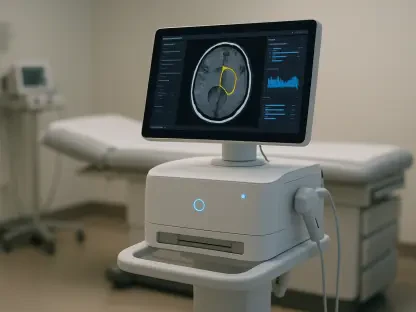In an era where healthcare costs continue to climb, a new financial burden has emerged for patients across the Washington D.C. area and beyond, raising eyebrows and sparking debate over the value of maintaining trusted doctor-patient relationships. Private medical practices are increasingly charging annual administrative fees, often ranging from $50 to $250, on top of standard copays and deductibles, leaving patients to grapple with the question of whether maintaining a trusted relationship with their doctor justifies the added expense. These fees, typically not covered by insurance, are often a surprise to patients who are already navigating a complex web of medical expenses. The trend reflects deeper systemic issues within the healthcare industry, where providers struggle to balance rising operational costs with the need to deliver quality care. As this practice becomes more common, it sheds light on the financial pressures facing both doctors and patients, while also highlighting concerns about trust and accessibility in an already strained system.
Understanding the Rise of Administrative Fees
Financial Pressures on Medical Practices
The implementation of administrative fees by private medical practices is often framed as a necessary response to mounting financial challenges that threaten their sustainability. Doctors point to the significant burden of “desktop medicine,” which includes time-consuming tasks such as processing insurance claims, managing prior authorizations, and handling prescription refills. These activities, while critical to patient care, are frequently uncompensated or under-reimbursed by insurance companies, despite some structures designed to cover overhead costs. The reality of rising operational expenses—coupled with the complexities of maintaining electronic medical records—has pushed many providers to seek alternative revenue streams. In the Washington D.C. area, for instance, annual fees ranging from $50 to $120 per patient are becoming the norm, as practices strive to keep their doors open amidst economic pressures that show no sign of easing.
The Gap Between Costs and Reimbursements
Beyond the immediate workload, the broader disconnect between operational costs and insurance reimbursements plays a pivotal role in the growing reliance on administrative fees. Industry experts note that while insurance plans may allocate funds for certain administrative tasks, these payments often fall short of covering the true cost of running a practice in today’s environment. The increasing cost of living, staff salaries, and technology upgrades further exacerbate this gap, leaving many doctors with little choice but to pass some of these expenses on to patients. Providers argue that without these additional fees, maintaining the level of personalized care that patients expect becomes nearly impossible. This financial strain underscores a critical flaw in the current healthcare payment model, where the burden of systemic inefficiencies often lands squarely on the shoulders of both providers and those seeking care.
Impacts and Implications for Patients
The Burden of Unexpected Costs
For patients, the introduction of administrative fees often comes as an unwelcome surprise, adding another layer of unpredictability to an already opaque healthcare cost structure. Many individuals, upon receiving bills for fees ranging from $50 to over $100 annually per doctor, find themselves reevaluating the affordability of maintaining long-term relationships with trusted providers. These charges, which are typically not covered by insurance, can deter individuals from seeking necessary care, especially for those already struggling with copays and deductibles. The financial strain is palpable in stories from the Washington D.C. area, where patients have reported frustration over fees that seem to materialize without prior warning. This unpredictability not only impacts wallets but also shapes perceptions of fairness and transparency within the medical field, raising questions about how such costs are communicated and justified.
Erosion of Trust and Access to Care
The ripple effects of administrative fees extend far beyond mere dollars and cents, striking at the heart of patient trust and access to healthcare services. Advocacy groups highlight that these additional costs contribute to a growing sense of distrust in the medical system, as patients feel blindsided by expenses they did not anticipate. This skepticism can discourage individuals from scheduling routine checkups or seeking timely treatment, potentially leading to worse health outcomes over time. Moreover, the fees risk widening disparities in access to care, as those with limited financial resources may be forced to forgo relationships with preferred doctors or avoid medical visits altogether. Experts emphasize that while providers may view these fees as a means of survival, the long-term impact on patient-provider relationships could undermine the very foundation of effective healthcare delivery, calling for urgent dialogue on more equitable solutions.
Looking Ahead: Navigating a Complex Landscape
Steps Patients Took to Manage Fees
Reflecting on the challenges posed by administrative fees, many patients in the Washington D.C. area took proactive steps to address the unexpected costs. Individuals often initiated conversations with their providers to understand the purpose of these charges and explore options for waivers when payment seemed unfeasible. Some successfully negotiated fee reductions by openly discussing their financial constraints, while others sought clarity on whether such fees were mandatory or tied to specific services. These efforts highlighted the importance of transparent communication, as patients who asked questions upfront were better equipped to make informed decisions about their care. This approach, though not a universal solution, demonstrated how advocacy on a personal level could mitigate some of the immediate financial pressures while fostering dialogue with healthcare providers.
Systemic Reforms That Were Pursued
Beyond individual actions, the broader push for systemic reform gained traction as a response to the frustrations shared by both patients and providers. Stakeholders in the healthcare industry began advocating for a reevaluation of how administrative tasks are compensated, urging insurance companies to better align reimbursements with the actual costs of running a practice. Collaborative efforts aimed at modernizing an outdated payment structure took shape, with calls for policies that would enhance transparency around fees and reduce the need for providers to rely on direct patient charges. These initiatives, driven by a shared recognition of systemic inefficiencies, sought to rebuild trust and ensure equitable access to care. Looking forward, the focus remains on fostering partnerships that address these root causes, offering hope for a future where financial barriers no longer stand between patients and the medical support they need.









